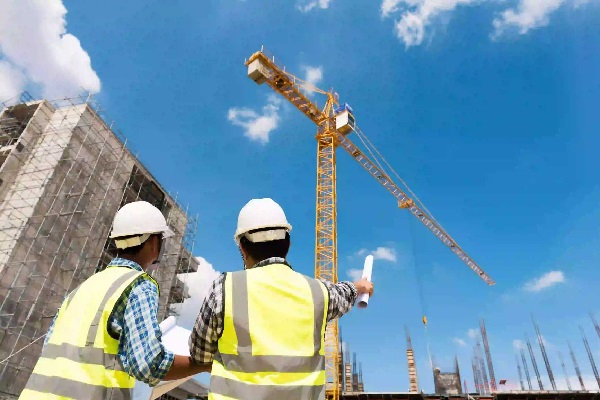In recent years, the construction industry in the Philippines has undergone a transformative shift, driven by innovations in civil engineering. These advancements are reshaping how projects are planned, executed, and maintained, leading to more efficient, sustainable, and cost-effective building practices. Here’s a closer look at some of the most significant innovations revolutionizing civil engineering in the country.
- Building Information Modeling
Building Information Modeling has emerged as a cornerstone of modern construction practices. BIM provides a comprehensive digital representation of a building’s physical and functional characteristics. By integrating various aspects of design, construction, and management into a single platform, BIM enhances collaboration among stakeholders and improves project outcomes. In the Philippines, BIM is increasingly used to streamline workflows, reduce errors, and optimize resource allocation, thus accelerating project timelines and enhancing overall quality.
- Green and Sustainable Building Technologies
As environmental concerns become more pressing, green and sustainable building technologies are gaining traction. Innovations such as energy-efficient building systems, green roofs, and sustainable materials are being incorporated into new projects. In the Philippine context, where the climate can be particularly challenging, these technologies offer solutions that address energy consumption and reduce environmental impact. Solar panels, rainwater harvesting systems, and advanced insulation materials are just a few examples of how sustainable practices are being integrated into construction projects across the country.
- Modular and Prefabricated Construction
Modular and prefabricated construction methods are revolutionizing how buildings are assembled. By prefabricating components off-site and then transporting them to the construction site, these methods significantly reduce construction time and labor costs. In the Philippines, where rapid urbanization is driving high demand for housing and infrastructure, modular construction provides a viable solution to meet these needs efficiently. This approach not only speeds up the construction process but also enhances precision and quality control.
- Advanced Construction Materials
The development and use of advanced construction materials are transforming the durability and performance of structures. High-performance concrete, self-healing materials, and advanced composites are just a few examples of how innovation is improving building resilience. In the Philippines, where natural disasters such as typhoons and earthquakes are common, these materials offer enhanced protection and longevity. Self-healing concrete, for instance, can repair minor cracks autonomously, extending the lifespan of structures and reducing maintenance costs.
- Smart Infrastructure and IoT Integration
The integration of Internet of Things (IoT) technology into civil engineering is leading to the creation of smart infrastructure. Sensors and data analytics are being used to monitor the health and performance of buildings and infrastructure in real-time. This technology enables proactive maintenance, reduces operational costs, and enhances safety. In the Philippine construction industry, the adoption of smart infrastructure solutions is helping to manage assets more effectively and improve the overall functionality of buildings and infrastructure.
- Drones and Aerial Surveying
Drones are revolutionizing surveying and mapping processes in civil engineering. Equipped with high-resolution cameras and GPS, drones provide accurate, real-time data that is crucial for planning and monitoring construction projects. In the Philippines, where terrain and accessibility can be challenging, drones offer a practical solution for conducting surveys and inspections efficiently. This technology not only enhances data accuracy but also reduces the time and cost associated with traditional surveying methods.
- Innovative Foundation Technologies
Foundation technologies have seen significant advancements, particularly in areas prone to unstable soil or seismic activity. Techniques such as ground improvement, deep foundation systems, and seismic retrofitting are being employed to enhance the stability and safety of structures. In the Philippines, where geological conditions can vary widely, these innovations are essential for ensuring the integrity and durability of construction projects.
Conclusion
As the Civil Engineering construction in Philippines continues to evolve, these innovations are playing a crucial role in shaping the future of construction. From advanced materials and smart technologies to sustainable practices and efficient construction methods, these advancements are addressing the unique challenges faced by the industry and driving progress.
For those seeking expertise in navigating these innovative trends, “Discover top-rated house construction company Philippines for all your renovation and repair needs.” companies like Nillasca Construction are at the forefront, applying cutting-edge techniques and technologies to deliver high-quality construction solutions. Whether you are looking to incorporate the latest advancements into your project or seeking a reliable partner for your construction needs, Nillasca Construction and other industry leaders are equipped to meet these challenges head-on, ensuring successful and sustainable outcomes.
You may also like
-
The Dangers of Black Mold: Warning Signs and Health Risks for College Students
-
Construction Line of Credit: Interest Rates, Terms & Fees Explained
-
Keep Your Water Systems Running Smoothly with Quality Plumbing Services
-
Find appealing apartment rental choices across calm neighbourhoods withinCastelldefels today
-
Top Reasons to Trust the Best Countertop Company in Canada


